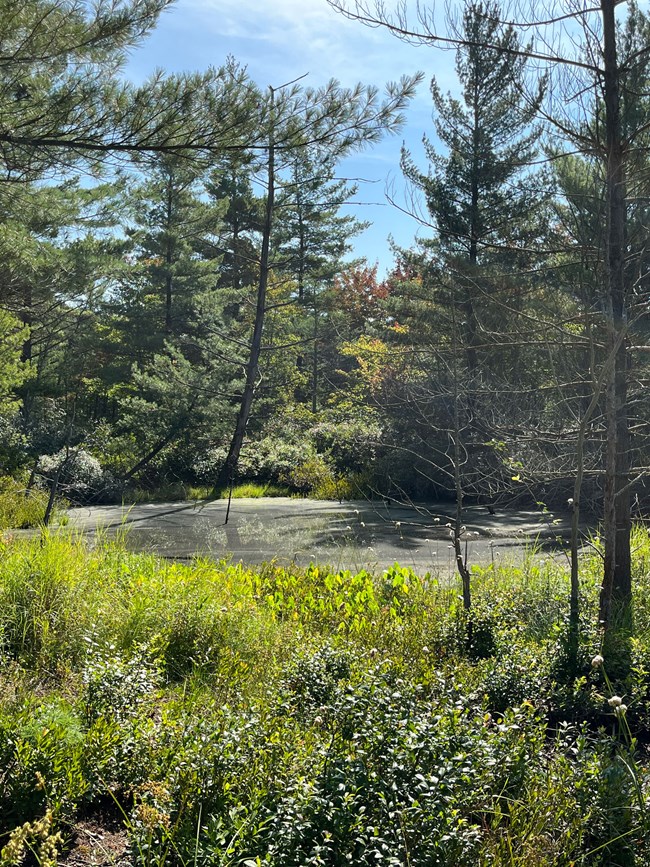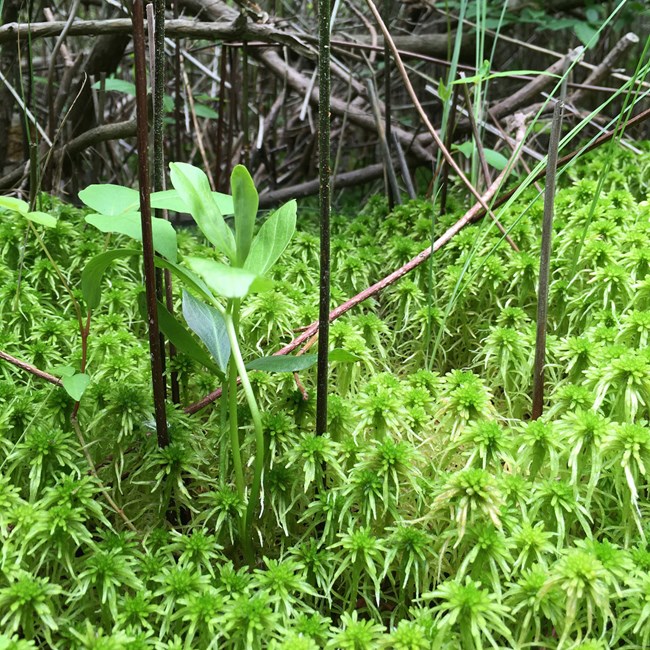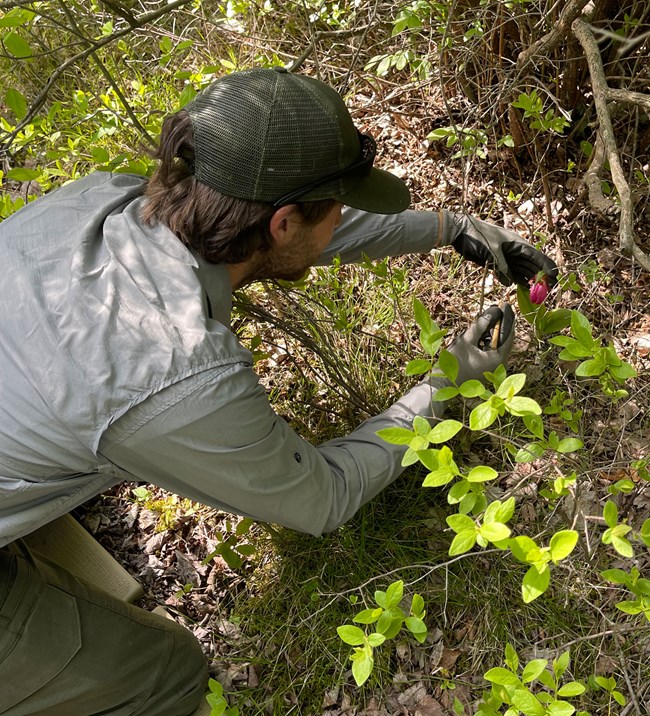
NPS photo by Wesley Butler Pinhook Bog is a 580-acre unit of Indiana Dunes National Park (INDU). Pinhook Bog and the hills surrounding it are part of the Valparaiso Moraine which was left by retreating glaciers some 10,000 years ago. As the glacier was retreating, a block of ice broke off and created a kettle lake. This kettle lake is fed solely by precipitation and the resulting runoff from the surrounding hills. There is no outlet to release the water. The slow decay of plants and retention of water due to there being no outlet has allowed the water to acidify dramatically. The water within Pinhook Bog has a pH around 4 where most lakes and streams in the area have a pH between 7 and 9. 
NPS photo by Wesley Butler Prior to purchase by the federal government, the upland area was a mix of forest and row crop fields. The former landowner operated a U-pick blueberry farm on the floating bog. Blueberry bushes thrive in acidic conditions making the floating bog ideal for blueberry production. The formerly farmed upland areas are now fallow fields which have transitioned to grasslands and new-growth forest. Meanwhile, the blueberry plants on the bog continued to flourish. 
NPS Photo by Zachary Lindeman As the unnatural blueberry shrubs and red maple trees increased, the amount of sunlight decreased. This encouraged more shade-loving species at the detriment of the sphagnum and rare plants naturally found on the bog which require abundant sun. There is also a drying effect as the shrubs and trees pull water from the floating mat which inhibited sphagnum growth. The bog is home to several rare orchid species. When growing under the dense layer of blueberry shrubs, the orchids that rely on insect pollinators suffered because the insects could not easily fly to the flowers. The pink lady’s slipper orchid was one such species on the decline. To assist the species, the lady’s slipper has been hand pollinated by INDU staff for several years. The hope is that by opening up the bog mat by removing blueberry bushes the insects which pollinate the lady’s slipper will again perform the task naturally and the orchid population will increase without human assistance. |
Last updated: April 17, 2024
